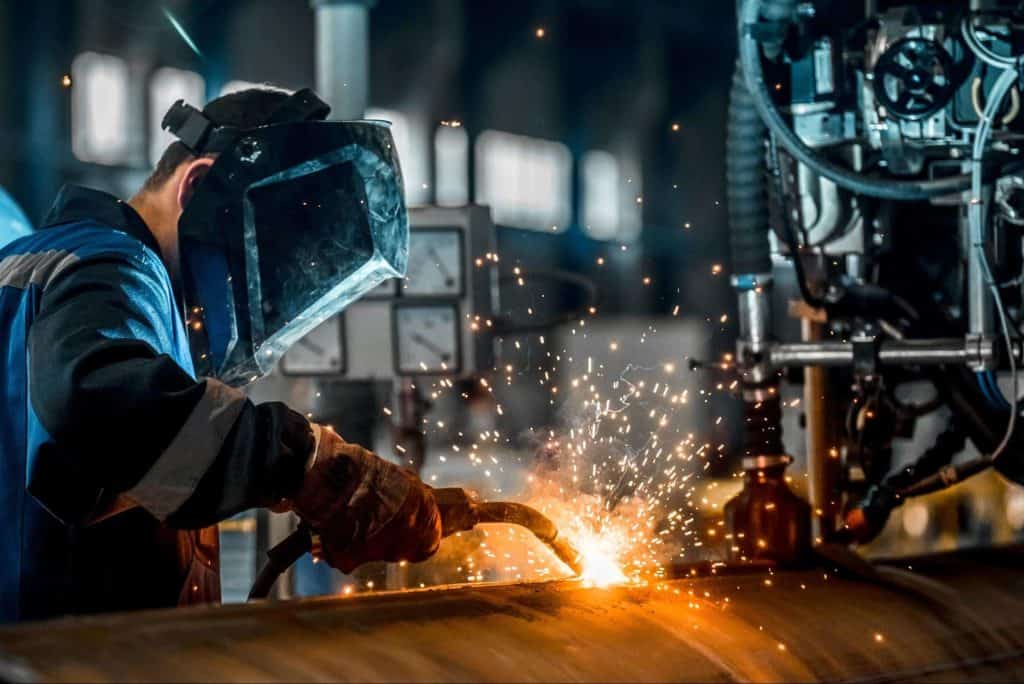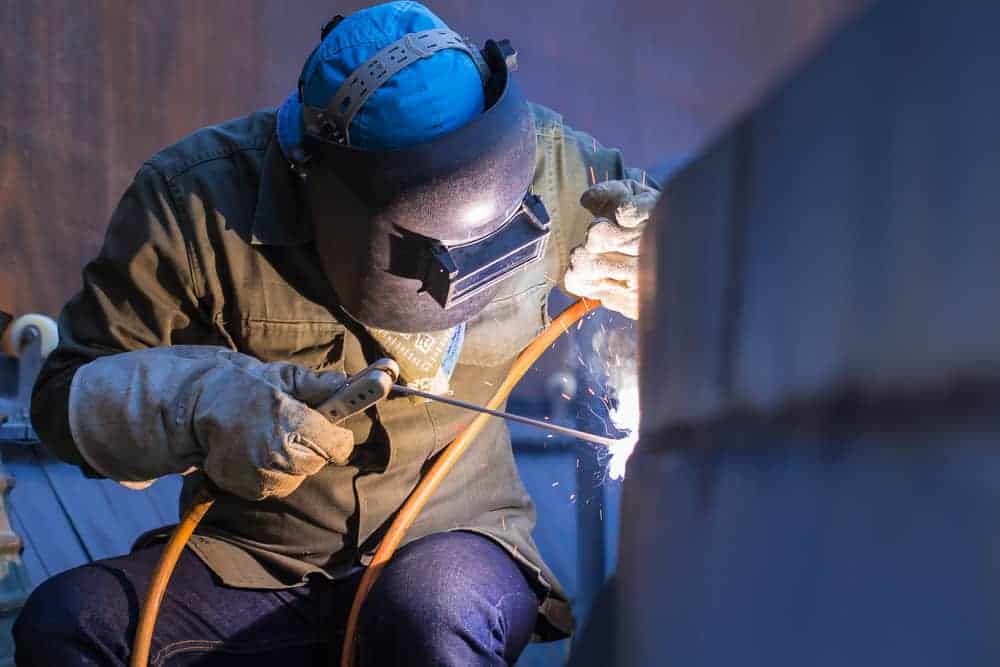Discovering the Fundamentals of Welding Assessment: A Detailed Evaluation of Procedures, Devices, and the Importance of High Quality Control in Welding Industries
Welding inspection serves as a foundation in the maintenance of safety and architectural integrity across different industries. Recognizing the ramifications of these methods elevates vital concerns regarding their performance and the future instructions of top quality assurance in welding.
Significance of Welding Examination
Welding inspection plays a vital function in making sure the integrity and safety of bonded frameworks. It works as a systematic strategy to assessing weld top quality, determining prospective defects, and making certain conformity with established criteria and requirements. The significance of welding inspection expands past simple adherence to guidelines; it is essential in safeguarding human lives and protecting investments in infrastructure.
Defective welds can result in disastrous failures, causing considerable financial losses, injury, or death. Rigorous evaluation procedures are important to spot problems such as inadequate infiltration, porosity, or fractures before they intensify right into critical failings. Furthermore, effective welding evaluation adds to the overall efficiency and durability of structures, ensuring that they can withstand the problems for which they were designed.
In addition, the application of welding inspection promotes a society of quality and liability within the welding industry. By focusing on examination, organizations show their commitment to excellence, thereby enhancing their credibility and competitiveness in the industry. Eventually, welding evaluation is not merely a step-by-step step however a fundamental component of design integrity and safety and security guarantee, vital for the effective implementation of welding jobs throughout various industries.
Secret Inspection Processes
A detailed technique to welding inspection involves several crucial processes that are vital for making sure weld high quality and structural integrity. The initial essential process is visual inspection, which enables assessors to recognize surface area defects such as splits, porosity, and incorrect bead appearance. This method works as an initial analysis to ensure that the weld fulfills specified criteria.

Furthermore, harmful screening may be executed on sample welds to evaluate their mechanical properties and efficiency under stress and anxiety. This process involves exhaustion, effect, and tensile screening to validate that the weld can endure operational conditions.
Last but not least, documentation and reporting are important parts of the evaluation procedure. Maintaining accurate documents of evaluations, observations, and examination results aids guarantee conformity with industry standards and facilitates continuous renovation in welding practices. Jointly, these vital processes form the backbone of efficient welding examination and quality guarantee.
Devices for Weld Evaluation
Many tools are essential for reliable weld assessment, each designed to analyze different aspects of weld high quality and performance. Among one of the most extensively used are visual evaluation devices, consisting of magnifying glasses and borescopes, which allow assessors to determine surface flaws such as fractures, porosity, and improper blend.
Furthermore, ultrasonic testing (UT) tools is vital for identifying internal problems. This tool utilizes high-frequency sound waves to expose suspensions within useful reference the weld, making sure the stability of the material. Radiographic testing (RT) devices, which use X-rays or gamma rays, in a similar way provide insight into the inner framework of welds, permitting the recognition of spaces or incorporations.
For specific dimensions, calipers and assesses play a substantial role in ensuring and identifying weld dimensions adherence to defined tolerances. Solidity testers evaluate the mechanical residential or commercial properties of the weld, ensuring it meets efficiency requirements.

Methods for Analyzing Quality
Just how can the top quality of welds be accurately examined? A selection of techniques are used to assess weld stability and ensure adherence to specified standards. Aesthetic examination is one of the most basic method, allowing examiners to identify surface flaws such as splits, porosity, or damaging. This non-destructive technique offers as a preliminary assessment prior to advanced approaches are utilized.
Ultrasonic testing (UT) is one more famous technique that uses high-frequency sound waves to detect interior defects within the weld. Houston Welding Inspection. This method gives a thorough view of the weld's honesty without endangering its architectural integrity. Additionally, radiographic testing (RT) utilizes X-rays or gamma rays to disclose internal problems, using thorough insights right into weld quality
Magnetic bit testing (MT) is efficient for detecting surface area and near-surface stoppages in ferromagnetic materials, using electromagnetic fields and colored fragments to highlight issues. Lastly, color penetrant testing (PT) can be used to uncover surface-breaking defects by applying a color that leaks right into splits and is consequently disclosed.
Compliance With Industry Criteria
Conformity with industry criteria is essential for making sure the top quality and security of welded structures. These standards, established by companies such as the American helpful resources Welding Society (AWS) and the American National Criteria Institute (ANSI), supply standards that control the welding procedure, materials, and evaluation methods. Abiding by these requirements not just makes certain the architectural honesty of welds yet also minimizes threats connected with failures that could cause catastrophic repercussions.

Welding examiners are entrusted with confirming conformity with these standards throughout the welding process (Houston Welding Inspection). This entails examining welding treatments, monitoring welder qualifications, and performing detailed assessments of the final item. Non-compliance can cause significant financial effects, task hold-ups, and damage to a business's reputation
Routine training and updates on standards are crucial reference to maintain employees educated and experienced, ensuring that all facets of welding procedures satisfy or exceed regulative demands. Eventually, dedication to market criteria serves as a structure for excellence in the welding sector, promoting safety and reliability in welded structures.

Final Thought
To conclude, welding evaluation acts as a crucial component in keeping the security and stability of welded frameworks. Through the implementation of key examination processes and the application of advanced devices and techniques, prospective issues can be identified and resolved properly. Adherence to sector requirements makes sure conformity and promotes a society of quality within the welding market. Ultimately, rigorous inspection techniques not only safeguard human lives yet additionally boost the resilience and performance of bonded buildings.
Moreover, the application of welding evaluation promotes a culture of top quality and accountability within the welding market. Eventually, welding evaluation is not just a step-by-step step however a basic element of design stability and safety and security assurance, important for the effective implementation of welding tasks across numerous fields.
An extensive strategy to welding inspection entails numerous vital processes that are vital for ensuring weld high quality and architectural honesty. These standards, established by companies such as the American Welding Culture (AWS) and the American National Standards Institute (ANSI), supply standards that control the welding process, materials, and examination procedures.Welding examiners are tasked with validating conformity with these requirements throughout the welding process.